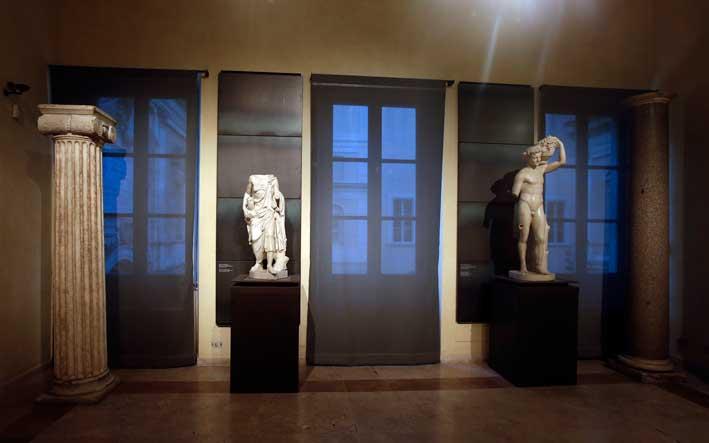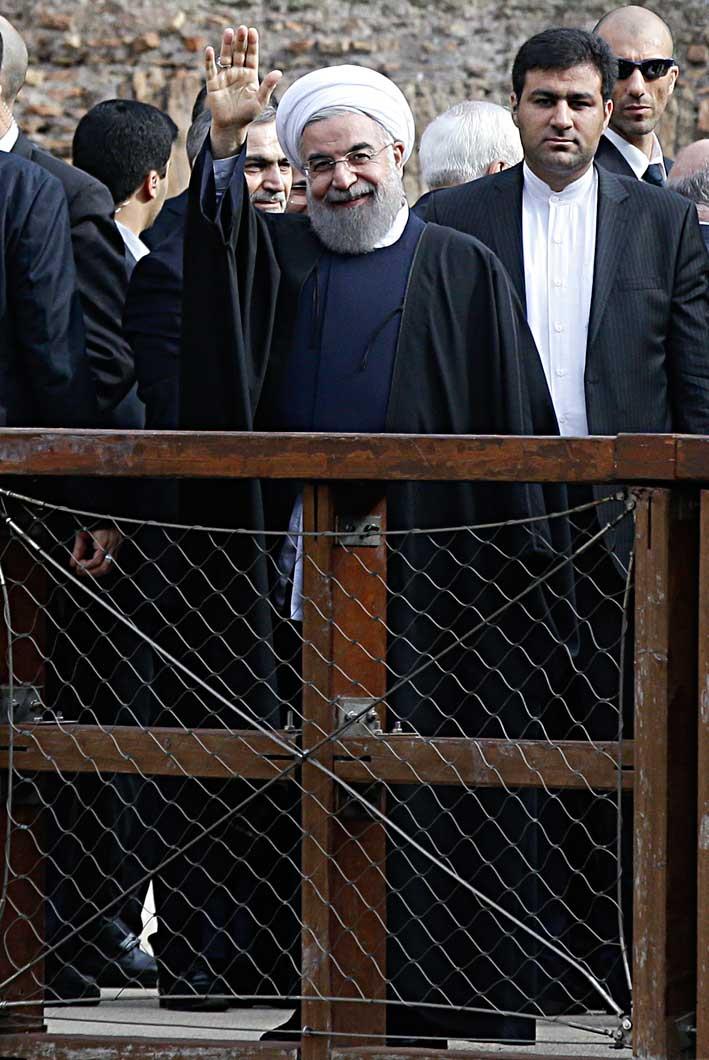A few days ago Rouhani visited Rome in order to attend a long series of commercial and diplomatic meetings. During the course of his visit he was taken to visit the Musei Capitolini and, so as not to give him culture shock, a series of sculptures where covered with white panels. According to the Italian diplomats, the nudity of this series of sculptures could have offended Rohuani. The decision of 'veiling' the sculptures created a huge debate all over Italy, which gives us some hope because this shows that culture can still instigate debate in our contemporary culture.

What happened this week in Rome, the covering of the nudity, was not different from what happened during the Counter-reformation, when the Church decided to paint over Michelangelo's Last judgment. Not to mention the case of the ceramic Luqa monument when the Pope visited Malta recently. What happened at the time of the Counter-reformation is not yet very different from what happened yesterday: the nudity, a symbol of our laicism and the affirmation of our culture, was covered due to religious belief. But why is the covering of nudity something so big if the renouncing of laicism is a daily act in Catholic countries like Italy (in which the gay marriage seems to still be a mirage) or in Malta (in which abortion is still a taboo)?
I think that the reason why the decision of covering the statues created such a huge debate, and the reason why it should be condemned, is for the doubly dangerous message which it is communicating; which is that our culture and tradition can be used and distorted in order to please visiting representatives of power. Therefore, if the sculptures are not pleasant, why should we exhibit them? The decision of covering the sculptures comes from the idea of promoting art as something enjoyable and not as something that obliges us to think, to question truths. The same idea of art as an entertaining product complimented a certain market in contemporary art, but legitimated also a systematic adoption of European artistic tradition as a marketable value in international transactions.

Going back to Renzi's government decision of covering the statues: one can easily understand that the decision was taken in order to facilitate the meetings between the Iranian chief and Italian industries, which were attending to his visit to the museum. But one has also to understand that this decision is just the other side of the coin of Renzi's practice, the exploitation of heritage that started during his years in Florence, in which the Renaissance was adopted as a marketable brand to sell the city, as was brilliantly analysed by the art historian Tomaso Montanari in his Le pietre e il Popolo and in his recent Privati del Patrimonio.
Renzi's policy towards art left a Florentine legacy and the new mayor of Florence is selling numerous historical buildings of the town to private investors, a practice that also alarmed UNESCO. But what is important to know is that what happened in Italy is the consequence of a systematic way of interpreting art, something that goes far beyond national borders. Therefore, the combination between art as a marketable good and an aggressive politics in terms of capitalist liberalisation can produce more than one mistake, even on this island.
In a country in which citizenship is for sale, one can start asking what can be saved and what should be protected more. Even in this case, we can perceive Italy as a premonition. Italy, in fact, was one of the first countries where cultural heritage was equated to natural heritage, in a desperate attempt to protect its landscape. The decision was taken in order to protect the speculation already circulating on national soil, and most probably arrived too late (and it still is not very effective in relation to other cases). The recent debate on ODZ land in Malta reminds us of what happened in Italy and obliges us to take a position: there is something that is not for sale? In other terms, there is something that we have to defend as part of ourselves?
In other terms, the culture that determined our history should be embraced for what it is: a political instrument of knowledge and critical thinking. If we refuse that power, then art and the environment will become a consumable good; something that can be sold or that can be adopted in order to sustain certain racist and intolerant positions. In both cases, our culture will be exploited rather than understood.
Let us start to think again, then, to protect our minds and our culture, before everything else. On another connected note: to sustain the arts it means to also recognise the professionals working in the field. Conceiving art as leisure will sustain a growing number of amateurs (who, by definition, work without receiving payment) and will encourage the production of questionable works which act to please rather than to question. When art stops to ask questions and starts to sustain the dominant power it becomes propaganda, which is something quite different.